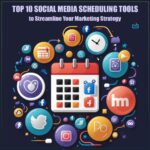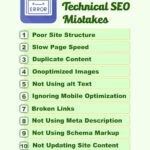Quality Score in Google Ads: Examples, Formulas, and Best Practices
In the complex world of digital advertising, Google Ads stands as a dominant platform for businesses and marketers to connect with their target audience. To succeed in Google Ads, you need more than just a compelling ad copy and a substantial budget. Understanding and optimizing your Quality Score is key to maximizing the effectiveness of your advertising campaigns. In this comprehensive guide, we will delve deep into the concept of Quality Score in Google Ads, providing you with clear examples, insightful explanations, and the all-important formulas you need to succeed.
1) What is Quality Score in Google Ads?
1.1 Definition of Quality Score
Quality Score is a metric used by Google to assess the quality and relevance of your keywords, ads, and landing pages. It plays a significant role in determining your ad’s position in the search results and the cost-per-click (CPC) you pay for each click on your ad. Essentially, it’s a measure of how well your ad campaign aligns with the user’s search intent.
1.2 Why Does Quality Score Matter?
Quality Score matters for several reasons:
- Ad Placement: A higher Quality Score can lead to better ad placements, potentially appearing above your competitors’ ads.
- Cost Savings: Higher Quality Scores can result in lower CPCs, allowing you to get more clicks for your budget.
- Improved Click-Through Rates (CTR): Ads with better Quality Scores tend to have higher CTRs, which can positively impact your ad’s overall performance.
- Relevancy: Google’s main aim is to provide a positive user experience. Higher Quality Scores indicate that your ad is relevant to the user’s search query, which benefits both you and the user.
1.3 How is Quality Score Calculated?
Quality Score is calculated on a scale of 1 to 10, with 1 being the lowest and 10 being the highest. Google assesses three primary factors to determine your Quality Score:
- Expected Click-Through Rate (CTR): This measures the likelihood that your ad will get clicked on when shown. It’s based on the historical performance of your keywords.
- Ad Relevance: This evaluates how closely your ad copy aligns with the user’s search query and the keywords you’ve selected.
- Landing Page Experience: Google assesses the quality and relevance of the landing page where users are directed after clicking your ad.
To calculate the overall Quality Score, Google uses a formula like this:
Quality Score = (Expected CTR + Ad Relevance + Landing Page Experience) / 3
Each component is weighted equally, and the resulting score is then rounded to the nearest tenth.
2) The Importance of Each Quality Score Component
2.1 Expected Click-Through Rate (CTR)
Expected CTR predicts how likely it is that your ad will be clicked based on historical data. A high expected CTR indicates that Google expects your ad to perform well in terms of clicks.
Example: Let’s say you have an ad with a historical CTR of 5%, and Google predicts that it should have a 4% CTR for a given keyword. Your expected CTR component might be slightly lower due to the historical performance.
To improve your Expected CTR:
- Use highly relevant keywords.
- Write compelling ad copy.
- Utilize ad extensions to enhance your ad’s appeal.
2.2 Ad Relevance
Ad relevance measures how closely your ad copy aligns with the user’s search intent and the keywords you’re targeting. A highly relevant ad is more likely to receive a higher Quality Score.
Example: If a user searches for “red running shoes,” and your ad promotes “blue hiking boots,” your ad relevance would be low, resulting in a lower Quality Score.
To enhance Ad Relevance:
- Use keywords in your ad copy.
- Create ad groups with closely related keywords.
- Craft ad copy that directly addresses the user’s query.
2.3 Landing Page Experience
Landing Page Experience evaluates the quality and relevance of the web page users arrive at after clicking on your ad. A seamless and relevant landing page contributes to a higher Quality Score.
Example: If your ad promotes a sale on smartphones, but the landing page is about pet supplies, users will likely have a poor experience, resulting in a lower Quality Score.
To optimize Landing Page Experience:
- Ensure your landing page content aligns with the ad’s messaging.
- Improve page load times.
- Make the page mobile-friendly.
- Provide valuable, relevant content.
3) How to Improve Your Quality Score
3.1 Keyword Selection and Organization
Choosing the right keywords and organizing them effectively is crucial. Group related keywords into ad groups to create highly relevant ad campaigns.
Example: If you sell sporting goods, you might create ad groups for “running shoes,” “tennis rackets,” and “fitness apparel,” each with their set of relevant keywords.
3.2 Crafting High-Quality Ad Copy
Write compelling ad copy that directly addresses users’ needs and queries. Use relevant keywords in your ad headlines and descriptions.
Example: If you’re advertising running shoes, your ad should mention the specific types and features of the shoes, such as “lightweight,” “cushioned,” or “trail running.”
3.3 Enhancing Landing Page Experience
Ensure that your landing pages provide valuable information and a seamless user experience. Users should find what they’re looking for quickly and easily.
Example: If your ad promotes a 20% off sale on a particular product, make sure that the landing page prominently displays the discounted items.
3.4 Regular Monitoring and Optimization
Continuously monitor your campaigns, ad groups, and keywords. Make adjustments based on performance data to improve your Quality Scores over time.
Example: If you notice a particular keyword has a low CTR and Ad Relevance, consider rewriting your ad copy or pausing that keyword.
4) Case Study – The Impact of Quality Score on Your Campaign
Let’s consider a hypothetical case study to see how Quality Score can influence your Google Ads campaign.
Scenario: Two advertisers, A and B, are bidding on the keyword “digital cameras.” Advertiser A has a Quality Score of 8, while Advertiser B has a Quality Score of 4.
Result: Even if Advertiser B bids more for the keyword, Advertiser A may still achieve a higher ad position and lower CPC due to the higher Quality Score. This means that Advertiser A can potentially get more clicks at a lower cost.
5) Advanced Strategies to Boost Quality Score
5.1 Implementing Ad Extensions
Ad extensions provide additional information to users, making your ad more appealing and relevant. Utilize sitelink, callout, and structured snippet extensions to enhance your ad’s visibility and Quality Score.
5.2 A/B Testing
Regularly test different ad variations to identify what resonates best with your audience. A/B testing can help you refine your ad copy and improve your overall Quality Score.
5.3 Landing Page Optimization
Invest in improving the user experience on your landing pages. A well-optimized landing page can have a substantial positive impact on your Quality Score.
Related Articles
Conclusion
In the world of Google Ads, Quality Score is the compass that guides your advertising efforts. Understanding its components, formulas, and best practices is essential for any advertiser looking to maximize their ROI. By continuously optimizing your campaigns, selecting the right keywords, and delivering relevant ad copy, you can elevate your Quality Score and achieve better ad placements at a lower cost. Remember, a high Quality Score not only benefits your business but also enhances the overall user experience in the digital advertising ecosystem. So, invest in improving your Quality Score and watch your Google Ads campaigns soar to new heights of success.
what is quality score in google ads
google ads quality score
google ads quality score formula
quality score google ads



